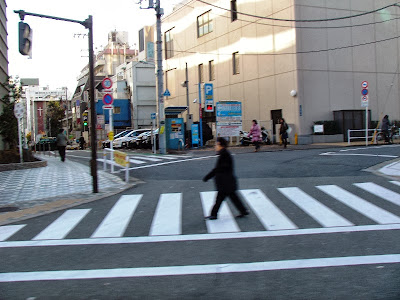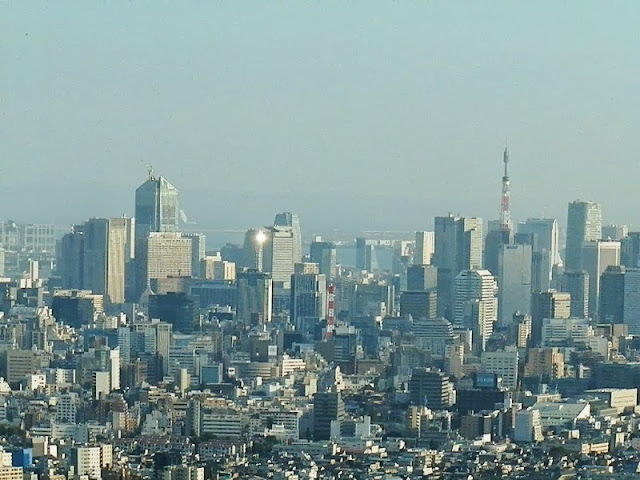The Emperor and the Empress of Japan finally visited Minamata City, Kumamoto Prefecture, yesterday.
It was to show respect for victims of the Minamata disease, the gravest pollution disease in Japan caused by waste water including mercury that was first officially confirmed in 1956 in Kumamoto Prefecture, a southwest prefecture of Japan.
However it is believed that the total number of people suffering without official recognition or hiding due to social prejudice against the Minamata disease is about 30,000.
Minamata disease , sometimes referred to as Chisso-Minamata disease, is a neurological syndrome caused by severe mercury poisoning. Symptoms include ataxia, numbness in the hands and feet, general muscle weakness, narrowing of the field of vision, and damage to hearing and speech. In extreme cases, insanity, paralysis, coma, and death follow within weeks of the onset of symptoms. A congenital form of the disease can also affect foetuses in the womb.
Minamata disease was first discovered in Minamata city in Kumamoto prefecture, Japan, in 1956. It was caused by the release of methylmercury in the industrial wastewater from the Chisso Corporation's chemical factory, which continued from 1932 to 1968. This highly toxic chemical bioaccumulated in shellfish and fish in Minamata Bay and the Shiranui Sea, which, when eaten by the local populace, resulted in mercury poisoning.
As of March 2001, 2,265 victims had been officially recognised (1,784 of whom had died)[2] and over 10,000 had received financial compensation from Chisso.[3] By 2004, Chisso Corporation had paid $86 million in compensation, and in the same year was ordered to clean up its contamination.[4] On March 29, 2010, a settlement was reached to compensate as-yet uncertified victims.
http://en.wikipedia.org/wiki/Minamata_disease
But there was one hero among them.
A male assistant nurse launched a hunger strike in front of the main office of Chisso Corporation in Tokyo in December 1971. Teruo Kawamoto (1931-1999) continued this hard protest till July 1973 leading a group of patients who were not judged to be victims of Chisso. They were called a voluntary negotiation group.
In 1959 the Government introduced an official recognition scheme of patients in Minamata City as victims of mercury Chisso discharged to the sea. But Kawamoto and many others were not judged by medical doctors and government officials to be victims of Chisso despite their showing symptoms of the Minamata disease. They could not receive damages and compensation from the company and the Government. So, in 1970 Kawamoto filed a request to review his case based on the Law of Administrative Tribunals.
In 1971 he left Minamata City and his job while he was expected to be soon promoted to a regular male nurse, heading for a Tokyo business street where the headquarters of Chisso Corporation was placed. He said to his wife that he would come back home in a week but he stayed in front of the Chisso main office building for 570 days. Some of those who were already recognized as Minamata patients joined this hunger strike conducted in front of the main office of Chisso.
Kawamura even directly exchanged words with the then president of Chisso in a negotiation meeting, sitting face to face. He picked up one ailing person who became paralyzed because of his having eaten Minamata fish. Kawamura tried to make the president recognize that this person with specific symptoms was a Minamara patient. After taking recognition from the president, the Minamata activist pointed to many others showing the same symptoms so as to make the Chisso management recognize all these people as Minamata patients who could claim compensation from the company.
Finally Kawamura and his group concluded with Chisso an agreement including payment of 18 million yen ($180,000) per person.
The core of the Minamata disease scandal is negligence of health and human rights of local people and fishermen by a big enterprise which not only financially supports a local city by employing many residents but also is strongly linked with the government by contributing to national industrial policies. Chisso was positioned as one of key manufacturers needed for economic growth of Japan even before and after WWII. So, elite bureaucrats and influential politicians in Tokyo were determined from the beginning to protect Chisso from accusation by Minamata victims and burden of paying big damages.
Big enterprises, influential politicians, and elite bureaucrats built an iron triangle to sacrifice ordinary people, such as Teruo Kawamoto, in the name of industrial development of Japan.
So, in 1960s when Kawamoto started his own investigation on patients in Minamata City, he was often blackmailed by other citizens who probably worked in a factory of Chisso or by thugs hired by the company. Chisso Corporation and citizens working there or living on business with Chisso hated the voluntary negotiation group, mostly consisting of patients not yet to be recognized as Minamata victims by the authorities. So, Kawanato's house was actually set fire on at night. But the Kawamoto family was not discouraged. And he finally paved a new way for salvation of many patients in Minamata having been neglected and excluded out of a too restricted official scheme for compensation for Minamata disease victims.
And the Emperor and the Empress of Japan finally visited Minamata City, Kumamoto Prefecture, yesterday to meet Minamata victims in person.
However before WWII, the then Emperor, the father of the present Emperor, visited the Chisso Minamata Factory in 1931. After WWII, he also visited the Minamata Factory in 1949. So, we can see how this chemical manufacturer was given great importance to by the Japanese Government.
http://spring5.blog.ocn.ne.jp/sakura/2007/05/post_13cc.html
Minamata City Facing Yatsushiro Sea (Shiranui Sea); the red letter indicates the Minamata River.
The number of Minamata patients officially recognized by local or central government is 2,265 as of 2006. There are 10,353 patients who are not officially judged to be Minamata patients but have received compensation money of 2,600,000 yen from the Government following a 1995 accord. And 7,890 patients who were not officially recognized as Minamata patients have been judged to be Minamata patients through various law suits. But it is estimated that there are still 30,000 people suffering without official recognition or hiding due to social prejudice against the Minamata disease.
Incidentally Chisso means nitrogen in Japanese. And the Crown Princess, the wife of the eldest son of the Emperor, has one of her ancestors among past top leaders of Chisso Corporation.
###
Tokyo Suburbs










































